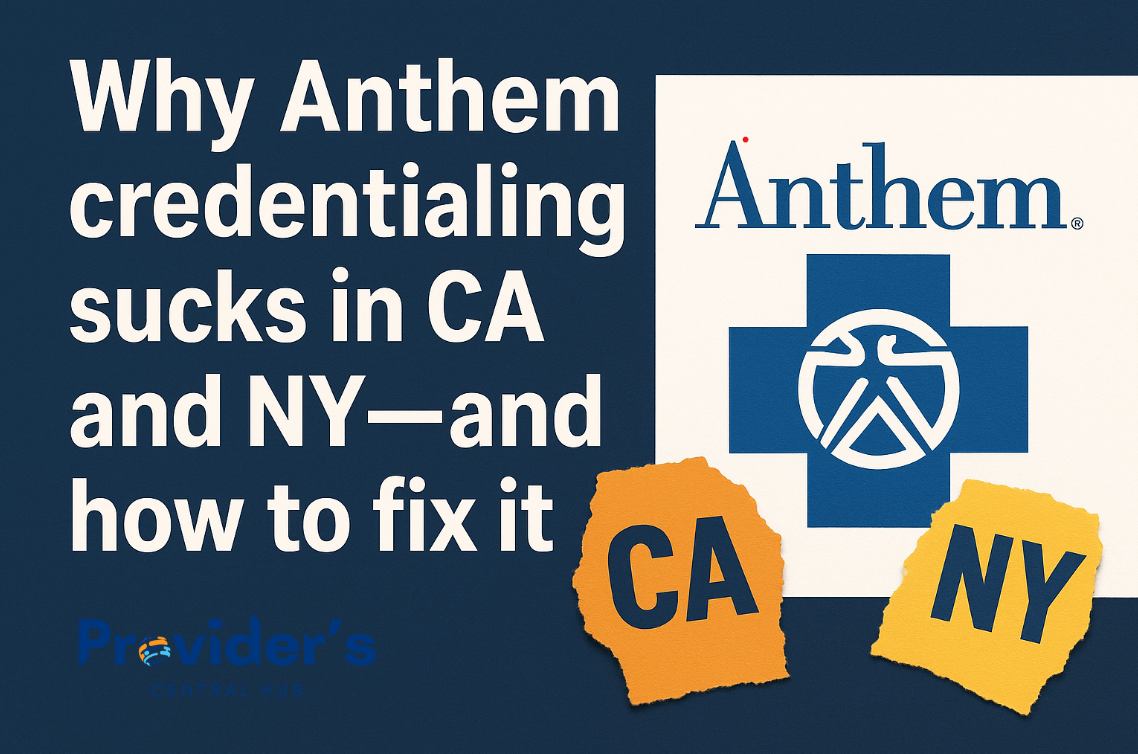Types of Medical Coding Audits and their Benefits
Weeping over rejected claims for medical coding errors or other reasons is pointless. As a result, carrying out a comprehensive medical coding audit is essential to operate your medical practice efficiently.
What is a Medical Coding audit?
Medical coding audits are performed by healthcare practices internally or externally to verify accuracy, compliance, and appropriate payment. This proactive strategy also aids in preventing possible fraudulent activity charges that may arise from state or insurance-payer audits.
Types of Medical Coding Audits in Healthcare
The healthcare industry conducts medical coding audits using a variety of methods. They are:
- Internal Audits
- External Audits
- Focused Audits
- Prepayment Audits
- Post-payment Audits
Internal Audit
Internal audits are procedures carried out by a healthcare practice’s internal staff inside an organisation. Although they are relatively less expensive, they might not yield useful results because of the internal auditors’ inexperience and limited understanding.
Internal audits assess a healthcare organisation’s operational effectiveness, risk management procedures, and internal control. They are also essential in pinpointing areas that need work and where the practice can perform better.
They also evaluate compliance with organisational policies and procedures and the correctness of the coding.
Here are a few examples of internal audits:
1). Compliance Audits
Internal audits are the general term for compliance audits. Their main goal is to ensure conformance to regulatory standards. Internal auditors verify that a medical practice abides by HIPAA, the Affordable Care Act (ACA), and other laws pertaining to the medical field.
2). Coding and Documentation Audits
During the coding and documentation audit, auditors evaluate the completeness of treatment procedure documentation, associated modifiers, and medical coding correctness. They guarantee that a medical coder working for the medical practice accurately records patient visits and can prove that the services provided were medically necessary to receive the appropriate payment.
3). Quality Assurance Audits
Another subset of internal audits that concentrates on assessing the calibre and efficacy of patient treatment at a healthcare facility is the Quality Assurance Audit. To find opportunities for improvement, the internal auditors examine treatment plans, medical data, and facility performance.
4). Privacy and Security Audits
PHI (Protected Health Information) is handled with care, and privacy and security audits ensure its protection. They also carry out the Department of Health and Human Services’ compliance criteria.
5). Pharmacy Audits
A pharmacy audit examines prescription dispensing, inventory control, and adherence to pharmacy laws. The auditors confirm that accurate medicine dispensing and proper prescription documentation are done.
External Audits
A medical coding audit carried out by a state, insurance company, or independent external auditing agency is known as an external audit:
To give a healthcare practice the most significant outcomes, an external audit is usually carried out by a team of professionals. They are pretty knowledgeable in medical coding. A third-party firm conducts the external audit; the State or insurance providers do not conduct it. Its goals are to verify coding guidelines and regulations, review the overall performance of a healthcare organisation, and identify and correct any errors that might raise a red flag for insurance payers.
Some examples of external audits are:
1). Commercial Payer Audits
Insurance companies and business payers audit commercial payers. The auditors examine the billing processes and claims. The primary goals of this audit are to verify correctness, look for fraudulent activity, and evaluate payer policy compliance. Healthcare facilities typically carry out these audits when they see a deviation from established norms.
2). Federal Government Audits
When a red flag is raised, your healthcare practice may be subject to federal government audits in addition to insurance providers. Federal government audits are those carried out by government organisations like CMS.
The primary objective of these audits is to verify that the practice complies with government healthcare programs such as Medicaid and Medicare. Additionally, the audits examine claims and billing processes and track the clinic’s overall performance regarding transparency inpatient services.
3). Third-Party Expert Audits
Third-party expert audits are proactive, impartial evaluations carried out by professional audit organisations of a healthcare institution’s operations. Before government audits, they assist in locating weaknesses and vulnerabilities, giving time for fixes. These audits, which cover topics including patient safety, HIPAA compliance, cybersecurity, billing, and coding, are frequently contracted out by healthcare providers. Identifying problems on their own in advance helps providers stay out of trouble with payers and regulators.
For example, a medical group may hire an auditing company once a year to assess its charge capture and coding procedures. During the audit, a sample of previous claims would be examined for mistakes or upcoming problems. The team would also look at staff training, technology, and workflows associated with coding and billing. After that, the team might address any issues before a Medicare audit.
Other Types of Medical Coding Audits
Internal and external audits are the two main types of medical coding audits. However, there are also more types of coding audits in healthcare. These are:
Focused Audits
Focused medical coding audits are strategic quality assurance initiatives that involve a thorough analysis of a particular selection of codes or coding regions that have been recognised as high-risk or prone to errors in healthcare providers’ revenue cycle operations.
These audits focus resources on analysing coding processes in specific categories where coding errors or under coding may have a disproportionate impact on compliance and reimbursement, as opposed to comprehensive audits that evaluate coding accuracy across the board. Typical targets include high-dollar procedure codes, complicated diagnosis coding for ailments like respiratory failure or sepsis, and coding for services provided in high-risk clinical settings like the emergency room.
Prepayment Audits
Before submitting claims to payers in Prepayment or Prospective audits, qualified auditors review and audit them. They find and correct errors that may have an impact on payment.
Post-payment Audits
Retrospective audits, also known as post-payment audits, occur after claims are submitted, processed, and reimbursed. By comparing previous audits with the current ones, the coders analyse the claims submitted for the current audit and gain insight into current medical coding trends.
Key Benefits of Medical Coding Audits
It is critical to remember the importance of medical code audits in controlling healthcare facilities’ revenue cycles and safeguarding them against fraudulent activity. The following are some anticipated advantages of medical code audits for medical facilities.
☑️ Improved Accuracy
Conducting medical coding audits can help healthcare providers improve the quality of their codes, lower the number of denied claims, and guarantee correct payment. Auditors find and fix mistakes during the audit process to enhance coding quality and reduce the possibility of external audits by the federal government or insurance companies.
☑️ Fraud Prevention
Medical coding audits find instances of fraudulent activity in billing processes, including redundant billing, upcoding, unbundling, and invoicing for services that were not essential. This will assist the medical facility in minimising losses and avoiding potential legal repercussions.
☑️ Increased Revenue Flow
Medical code auditing guarantees prompt payment for rendered services, boosting your practice’s income. Roughly 70% of medical practitioners said that incorrect coding and invoicing had resulted in losses for them. Auditing reduces these mistakes. Therefore, providing bills with the proper codes and accurately documenting the services rendered can help lower the risk of losses.
☑️ Correct Use of Modifiers
Audits ensure that modifiers are used correctly, which is typically seen as a complex process. Expert coders are not immune to errors while adding a modifier to the CPT code. To reduce the percentage of claims denied, a medical coding audit assists in identifying any missing or incorrectly positioned modifiers and fixing them before sending the claims to payers.
☑️ Improved Documentation Accuracy
Healthcare practices must maintain accurate records for the benefit of patients, accurate invoicing, and regulatory requirements. Medical coding audits guarantee the accuracy and completeness of all associated documentation about diagnostic and treatment protocols. On the other hand, incomplete paperwork may cause the treatment methods to be misunderstood, delaying payment or preventing claims from being approved.
Medical Coding Audits Process
A medical code audit is a thorough procedure that assesses the healthcare practice and notifies healthcare professionals of any impending actions that may harm their service, such as claim denials and susceptibility to false accusations.
Here is the step-by-step process that medical audit providers should undergo while auditing their healthcare practices.
Selecting Internal or External Coding Audit
To begin the audit process for your healthcare practice, decide whether to have an internal or external audit. Having your own internal audit team for routine audits could seem convenient. Still, most practices strongly advise against doing an in-house internal audit using medical coding experts.
Even the most seasoned internal auditor might not have the knowledge and objectivity external coding auditors can provide. They offer in-depth explanations of the effects of coding mistakes and non-compliance trends that internal staff could overlook or minimise. While internal auditors may eventually grow complacent, external auditors are always aware of the most recent laws and compliance requirements.
The status quo and hiding possible issues are not in the interests of external auditors. They evaluate shortcomings and offer precise, doable solutions to address coding problems. This keeps your practice in good standing with regulatory bodies and prevents income loss due to denials. While internal audits have advantages, external audits offer vital information and openness that promote risk management and ongoing development.
Searching for an auditor
Contact medical coding firms offering audit services if you have decided to pursue an external audit. You have several options when it comes to outsourcing your auditing process. A team of professionals represents each discipline. In addition to being professionals in code, these auditors are well-versed in rules and keep up with any updates from the government or insurance companies.
Establishing the scope of the audit
The scope establishes the precise regions, periods, and categories of medical records that will be inspected throughout the audit. By precisely outlining the scope, healthcare providers can ensure the audit is focused, effective, and in line with their goals.
Communicating openly with the auditors before starting the audit is crucial. Through this partnership, both sides can comprehend the provider’s objectives, worries, and areas of particular interest.
The scope should be adjusted to meet the provider’s specific demands and priorities. Some examples of what it might include are reviewing a certain group of medical codes, concentrating on high-risk or high-volume procedures, or assessing coding processes within a department or timeframe. By limiting its scope, the audit can be more focused and provide insightful input on areas that need validation or improvement.
Some points that should be incorporated into the scope of the audit include:
- Auditing the proper use of CPT codes
- Determining the correct places of service
- Looking for missing modifiers
- Looking for incorrect use of modifiers
- Detecting incorrect diagnoses
- Identifying coding and documentation accuracy
- Verifying if supporting documentation is adequate
- Checking if services are necessary
Looking for irregularities
It would be best if you filtered these anomalies when performing an audit to identify mistakes that could result in claim denials and have an impact on the revenue cycle:
- Writing the correct code for the reason for the visit
- Using modifiers that support primary codes
- Using only the latest and updated codes
- Avoiding the use of outdated codes
- Correcting all improper medical codes
Finding unrelated codes
Verifying codes and modifiers irrelevant to diagnosis or treatment protocol is another part of the audit process. Unrelated codes used by medical coders may cause payers to become suspicious and may result in an audit by the state or insurance payers.
For example, the medical coder assigns a code for a heart issue even though the patient is receiving treatment for a broken arm; this is an irrelevant code. Auditors are particularly aware of irrelevant codes, which could be signs of fraud or coding problems.
Medical Coding Audit Checklist
The medical coding audit checklist describes what to review during the audit process.
- Verification of patient records
- Verification of provider information
- Investigate for duplicate records attached by mistake
- Verification of the electronic health records (EHR)
- Completeness of medical history and physical visits
- Verification of diagnostic reports
- Completeness of diagnosis and treatment plan
- Details of the procedures conducted
- Documents on prescribed medications
- Verification of codes assigned and formats used
Medical Coding Audit Best Practices
Apply these practices to get the best results from medical coding audits:
- Establish audit objectives
- Use reliable coding guidelines
- Train auditors
- Implement corrective actions
- Review and update audit procedures
- Utilize automated tools
- Document findings clearly
- Provide feedback and education
- Ensure compliance with regulations
Doctors, are you prepared to unlock your financial potential?
With our FREE medical code audit, you can wave goodbye to inaccurate billing and unpaid bills.
Together, let’s maximise your profits!
If you have any queries or would like to know more please email us at info@providerscentralhub.com





1 Comment
[…] claims is essential for maximizing reimbursement. Practices should invest in training staff on coding accuracy and use advanced billing software to automate the submission […]